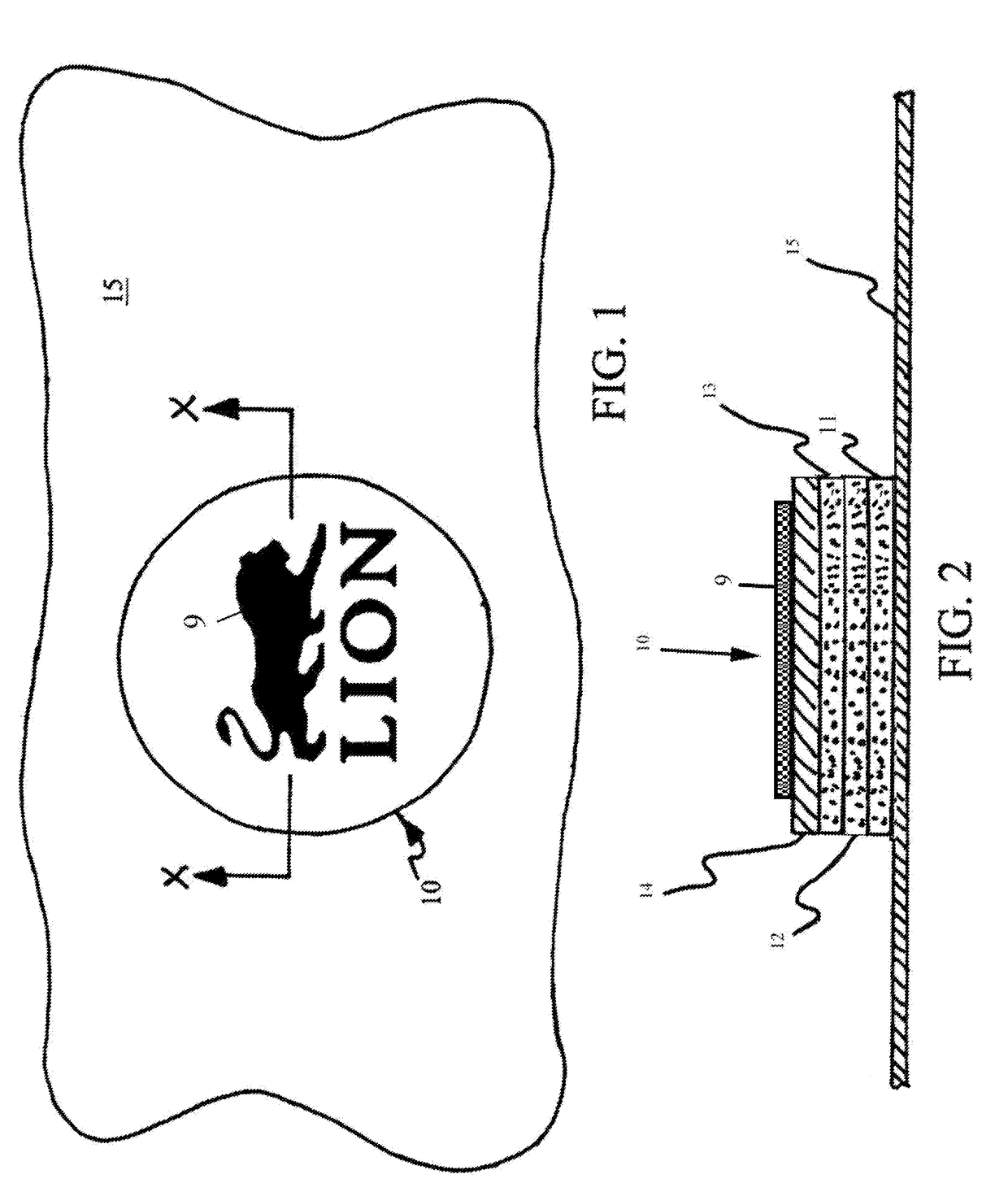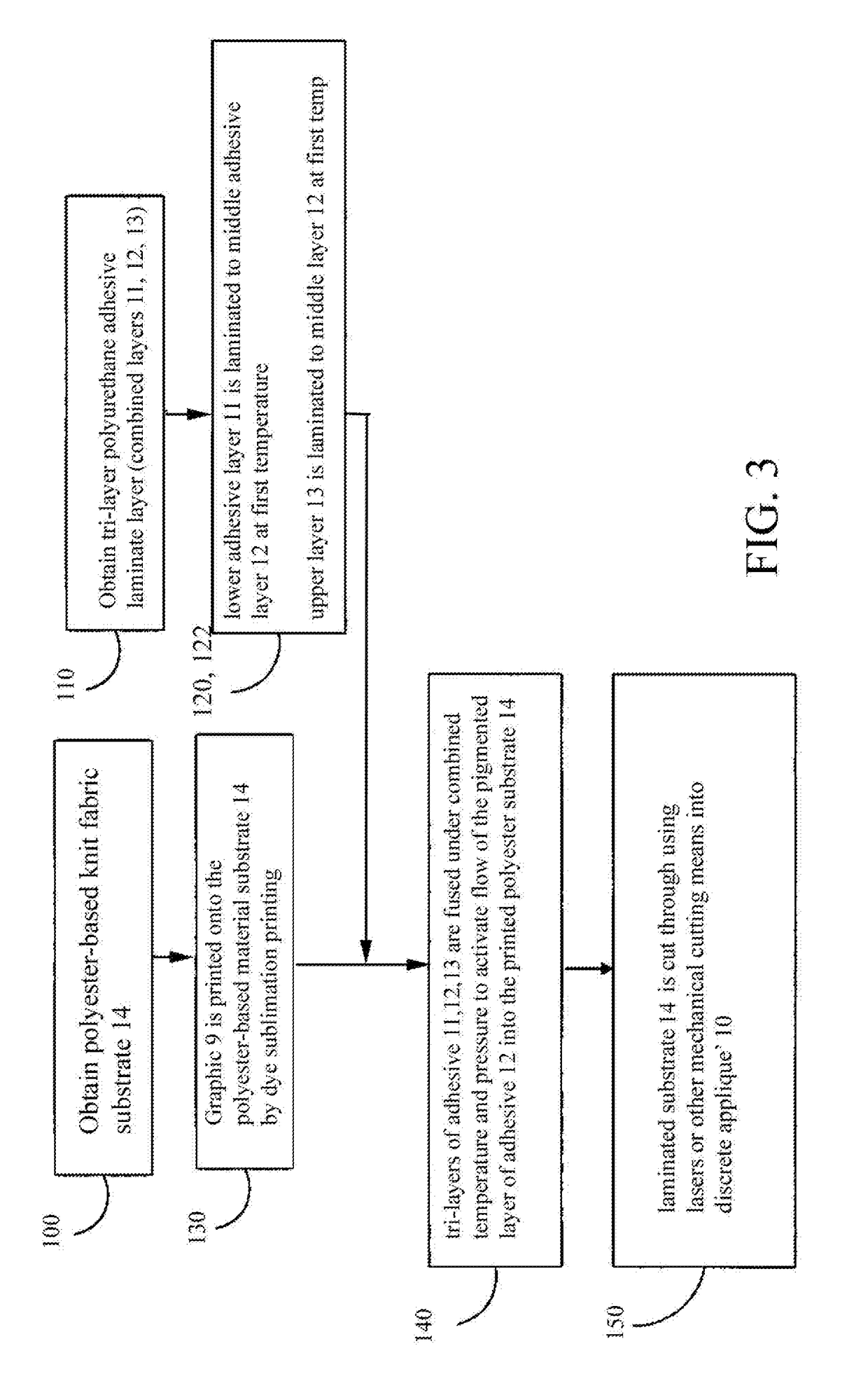Process for creating a sublimated printed heat-sealable applique
a technology of sublimation printing and appliques, applied in the direction of printing, chemistry apparatus and processes, synthetic resin layered products, etc., can solve the problems of flat designs created by silk-screening, complex and time-consuming, and products that withstand repeated stretching, so as to avoid color loss or trading
- Summary
- Abstract
- Description
- Claims
- Application Information
AI Technical Summary
Benefits of technology
Problems solved by technology
Method used
Image
Examples
Embodiment Construction
[0022]The present invention is a process for producing a heat-activated appliqué that retains graphical integrity by inhibiting migration of ink or dye from the transfer or through the transfer from the garment fabric below. The opaque adhesive also prevents show through of the garment fabric whilst providing minimal visual opaque adhesive at the edge of the appliqué. The heat-activated appliqué itself comprises a graphic printed onto the appliqué material with a three layer heat activated adhesive.
[0023]With combined reference to FIGS. 1 and 2, the heal activated appliqué10 of the present invention includes triple teat-activated adhesive layers 11, 12, 13 and an upper appliqué fabric layer 14 atop the lower triple adhesive layers 11, 12. 13. The lower heat activated adhesive layer 11 bonds the appliqué10 to a substrate 15, which ma be any fabric or leather substrate. A graphic image 9 is printed atop the fabric layer 14. The graphic 9 may be any decorative image or shape including ...
PUM
| Property | Measurement | Unit |
|---|---|---|
| temperatures | aaaaa | aaaaa |
| temperature | aaaaa | aaaaa |
| temperature | aaaaa | aaaaa |
Abstract
Description
Claims
Application Information
 Login to view more
Login to view more - R&D Engineer
- R&D Manager
- IP Professional
- Industry Leading Data Capabilities
- Powerful AI technology
- Patent DNA Extraction
Browse by: Latest US Patents, China's latest patents, Technical Efficacy Thesaurus, Application Domain, Technology Topic.
© 2024 PatSnap. All rights reserved.Legal|Privacy policy|Modern Slavery Act Transparency Statement|Sitemap


